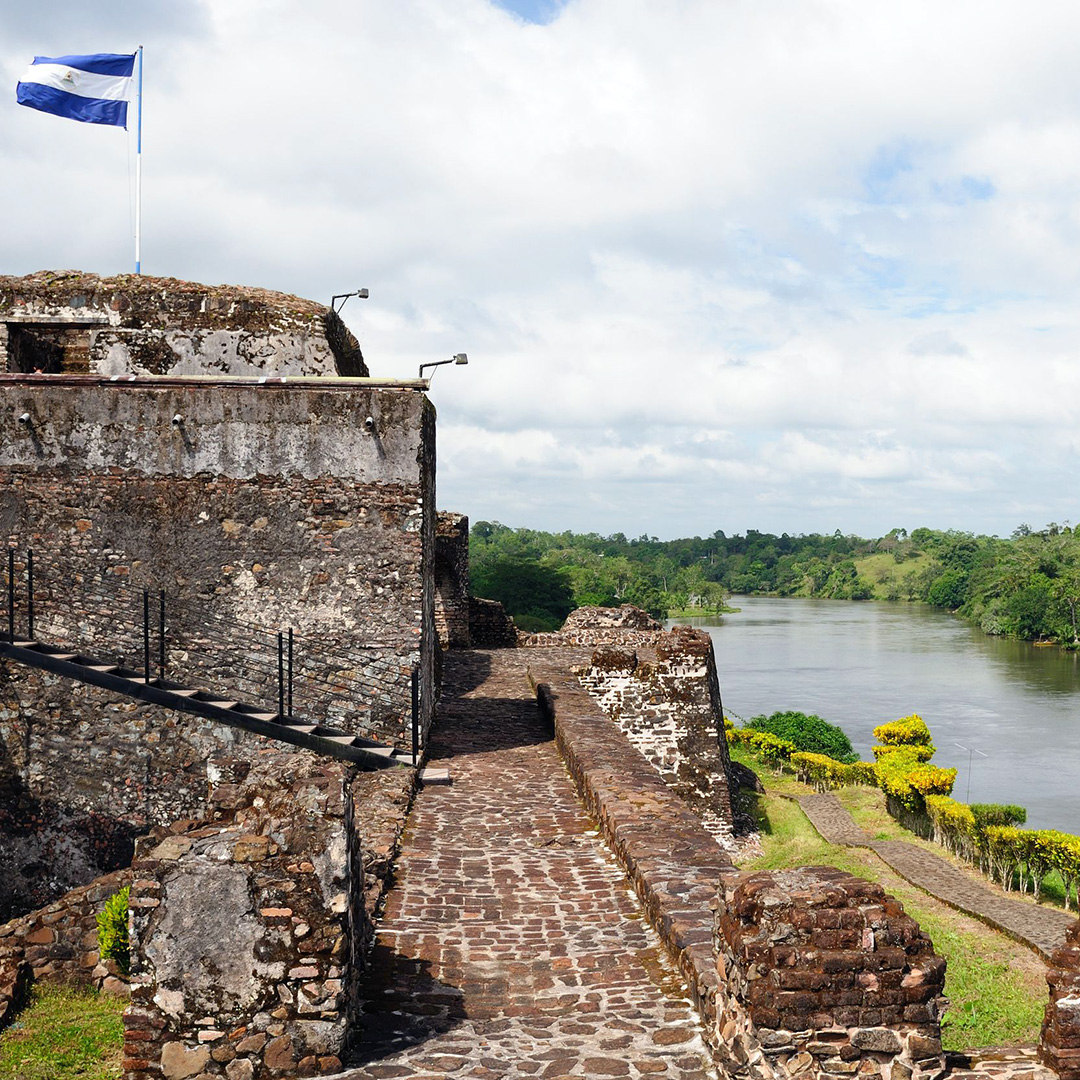Visiting El Castillo along the Río San Juan
Located on the southern bank of the Río San Juan, the town of El Castillo (pop. 1,500) has neither roads nor cars—reason enough to visit. The town’s not accessible by land, so most folks can’t drive a car, but nearly all of them can drive a panga. Residents make their living principally in the tourist industry, in addition to working on cacao farms in the surrounding hills, fishing the river, commuting to the sawmill in Sábalos, the palm oil factory up the Río San Juan, or one of the resorts along the river. El Castillo celebrates its fiestas patronales on March 19.

What to See in El Castillo
Built in 1675, la Fortaleza, the fortress of El Castillo de la Pura Inmaculada Concepción de María, was strategically placed with a long view downriver, right in front of the torrent Raudal el Diablo (still a navigational hazard). At the time, it was the largest fortress in Central America with 32 cannons and 11,000 weapons. Now dark, moss-covered ruins, la fortaleza is one place you should not miss.
Celebrating 500 years in the Americas, the government of Spain restored the fortress at great cost, building an historical museum and lending library, plus the nearby school and Hotel Albergue. The museum (Mon.-Fri. 8am-noon and 1pm-5pm, Sat.-Sun. 8am-noon and 1pm-4pm, $3) is small, but interesting, showing the history of the fortress and a collection of arms and other items dating as far back as the 1500s, including a pile of cannon balls and early rum bottles. Most signs are translated into English. A nearby butterfly farm, Mariposario El Castillo (tel. 505/8924-5590, $3 foreigners, $2 Nicas, $1.50 students), was also built by the Spanish, although much more recently.
Recreation and Tours in El Castillo
Run by municipal tourism cabinet, La Caseta de Información Turística (in front of the main dock, Mon.-Sat. 8am-12:30pm and 3pm-6pm) is the first stop for most tourists. The attendant can help with directions, lodging options, renting kayaks, and organizing tours of the surrounding area with local guides who are part of the cabinet. Prices keep rising as El Castillo becomes more popular. The most popular tours promoted at La Caseta are jungle hikes or chocolate making at a nearby cacao cooperative ($75-85, up to 5 people). Unfortunately smaller groups pay the same minimum price. They offer a variety of other options including horseback tours and nocturnal caiman watching. Charter a fishing boat ($140/day). Rent a kayak for three hours ($15 pp). If you plan to hike in the nearby reserve at Bartloa, buy your pass here first ($3).
There are plenty of other guides who advertise along the main road offering similar tours. Your host can certainly help arrange tours. It’s best to shop around a little to compare tours and prices. Juan Ardilla (tel. 505/8938-8552) offers a five-day camping tour from San Juan de Nicaragua to El Castillo. Alfonso at Agencia Tropical (in front of El Chinandegano, tel. 505/8431-2389), a member of the local cacao co-op COODEPROSA, offers chocolate tours of his land parcel ($15 pp, minimum of 2 people).
Nena Lodge & Tours (1 kilometer west of the dock, tel. 505/2583-3010 or 505/8821-2135) offers tours of the Indio Maíz Reserve ($70-80 for 2 people, $80-90 for 4 people) as well as night tours on the river ($45 for up to 4 people). Check out their sister’s handmade artesenía store a couple houses down, Artesanía y Manualidades Yorleni (daily 8am-7pm). It’s a little space with a lot of variety of artisanal crafts, most made by Yorleni herself.

Excerpted from the Sixth Edition of Moon Nicaragua.